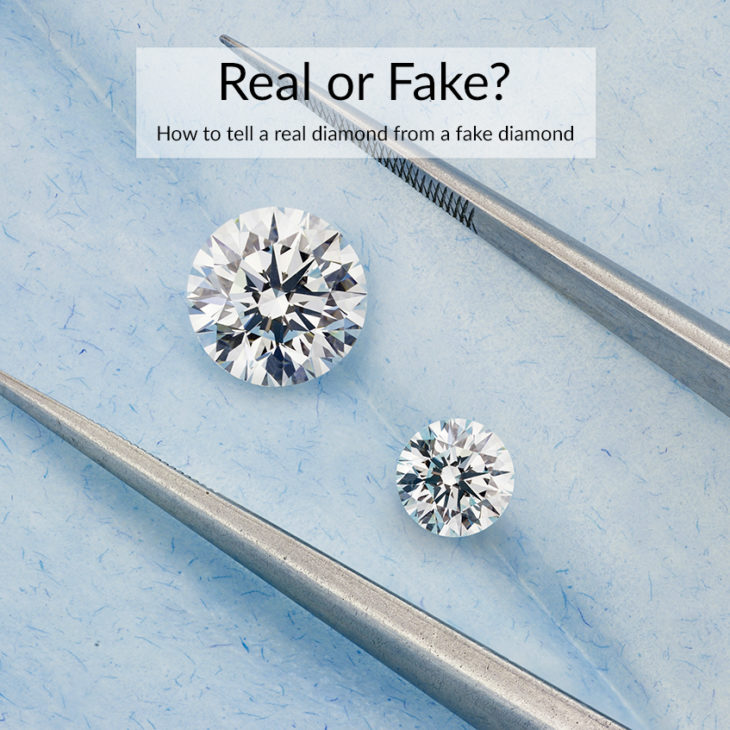How Can I Tell if My Diamond is Real or Fake?
Whether you recently inherited a diamond ring, you found a stone on the ground, or you just want to be absolutely sure your stone is real, these tests are here to help. The following diamond tests will help you accurately determine if your diamond is a fake, but to be completely 100% sure your diamond is real, try to have the stone pass at least one of these tests, then take it to your local jeweller or gemologist for an appraisal.

Breath Test
Position the stone close to your mouth and breathe onto the face of the stone-like you would breathe onto a mirror to make it foggy. Diamonds cannot hold heat and immediately dispense it, so instead of remaining foggy like the mirror would, the diamond would have no evidence of fog on it at all and would remain completely transparent. Try this same test on a cubic zirconia, and the surface of the CZ will remain foggy. This test will help you determine if you have a CZ instead of a diamond, but it will not tell the difference between moissanite and diamond.
Loupe Test
If you have a jewellery loupe, magnifying glass, or even a microscope at home as well as a basic understanding of diamond inclusions, this next test will help you easily pick out a lower to commercial quality diamond. Most diamonds have some type of diamond inclusion. If you take your stone and inspect it under some type of magnification in good light, you might notice a small piece of carbon or a white spot that looks like a feather.
This test will help you determine if your diamond is real. However, do not use this test as the deciding factor to tell whether your diamond is a fake due to the absence of inclusions. Diamond specific inclusions will indicate a real diamond, but there may be instances where you are inspecting an internally flawless diamond that is without any inclusions, making the real stone very similar to other diamond simulant cubic zirconia and other synthetic diamonds like moissanite do not have these types of inclusions and are internally flawless.
Scratch/Newspaper Test
Both these tests work better if you have a loose diamond. The first test is to take the stone and try to scratch a piece of glass with it. This should be done with caution because it is possible to damage or chip a diamond, especially heirloom diamonds with brittle edges. If your stone does not leave a scratch in the glass, it is most likely a fake. If it does leave a scratch, proceed with some additional tests because some synthetic diamonds will also scratch glass.
The newspaper test works well when you have a slightly larger stone. If you place a cubic zirconia over a piece of finely printed newspaper, you should be able to read the print underneath the stone. A diamond, however, refracts the light in such a way that you cannot read the print below it. If you don't have a piece of newspaper lying around, take a piece of paper and draw a small dot on it. You will not be able to see the dot through a real diamond.
Water Test
Drop a diamond into a glass of water. This will only work if your diamond is loose. Due to the differing densities, a real diamond will sink to the bottom of the glass where most diamond simulants will float.
If your stone passes at least one of these tests, it would be worth it to have your diamond examined by a professional jeweller or gemologist.
How Can I Tell if My Diamond is Real or Fake?
![How Can I Tell if My Diamond is Real or Fake?]() Reviewed by Diviano
on
July 15, 2021
Rating:
Reviewed by Diviano
on
July 15, 2021
Rating:

No comments: